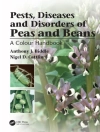Understanding the current state and dynamics of any forest is extremely difficult – if not impossible – without recognizing its history. Białowieża Primeval Forest (BPF), located on the border between Poland and Belarus, is one of the best preserved European lowland forests and a subject of myriads of works focusing on countless aspects of its biology, ecology, management. BPF was protected for centuries (15th-18th century) as a game reserve of Polish kings and Lithuanian grand dukes. Being, at that time, a part of the Grand Duchy of Lithuania, BPF was subject to long-lasting traditional, multi-functional utilisation characteristic for this part of Europe, including haymaking on forest meadows, traditional bee-keeping and fishing in rivers flowing through forest. This traditional model of management came to an abrupt end due to political change in 1795, when Poland and Grand Duchy of Lithuania ceased to exist in effect of partitioning by neighbouring countries, and the territory of BPF was taken over by the Russian Empire. The new Russian administration, influenced by the German trends in forestry, attempted at introducing the new, science-based forestry model in the BPF throughout the 19th century. The entire 19th century in the history of BPF is a story of struggle between new trends and concepts brought and implemented by new rulers of the land, and the traditional perception of the forest and forest uses, culturally rooted in this area and originating from mediaeval (or older) practices.
The book will show the historical background and the outcome of this struggle: the forest’s history in the long 19th century focusing on tracking all cultural imprints, both material (artificial landscapes, introduced alien species, human-induced processes) and immaterial (traditional knowledge of forest and use of forest resources, the political and cultural significance of the forest) that shaped the forest’s current state and picture. Our book will deliver a pictureof a crucial moment in forest history, relevant not only to the Central Europe, but to the continent in general. Moment of transition between a royal hunting ground, traditional type of use widespread throughout Europe, to a modern, managed forest. Looking at main obstacles in the management shift, the essential difference in perceptions of the forest and goods it provides in both modes of management, and the implications of the management change for the state of BPF in the long 19th century could help in better understanding the changes that European forests underwent in general.
Table of Content
1. Introduction.- 2. Sources and methods.- 2.1. Written sources – archival and literature surveys.- 2.2. Maps and graphical depictions.- 2.3. Field surveys.- 2.4. Oral sources.- 2.5. Palaeoecological studies by other authors.- 3. Traditions of a royal forest (until 1795).- 3.1. The historical background: BPF as a royal hunting ground, access rights, types of use (haymaking, beekeeping), shifts in management in the 18th century, fall of Polish-Lithuanian Commonwealth.- 3.2. Material imprints – the environmental impact of the period: system of conservation, creation of cultural landscapes due to centuries-long traditional use of forest resources (landscape of access area, landscape of a hunting garden), evolution of pure-pine stands as a result of centuries of fire use, establishment of the European bison protection and support system.- 3.3. Cultural heritage – role of BPF among royal forests, traditional knowledge – variety of uses for Scots pine and lime trees.- 3.4. View fromoutside: the recognition of the forest (BPF in the works of naturalists, artists, travellers until the end of the 18th century).- Boxes: 1. Biographical box: J. E. Gilibert’s studies of BPF’s animals.- 2. Art/literature box: J.H. Muntz’s depiction of an arboreal apiary.- 3. Species/processes/types of forest box: Cultural landscapes.- 4. The beginning of the imperial period (1796-1831).- 4.1. The historical background: BPF devoid of protection until 1802, return to the Polish system of management and its fall after the Polish national uprising of 1831.- 4.2. Material imprints – the environmental impact of the period: continuation of the 18th century trends with first attempts at drawing new, “scientifically” based management plans.- 4.3. Cultural heritage – BPF as a source of imperial gifts, Białowieża’s foresters role in the national uprising, traditional knowledge of the forest (local names of forest habitats that became the source of 20th century nomenclature).- 4.4. View from outside: the recognition of the forest (BPF in the works of naturalists, artists, travellers until 1831).- Boxes: 1. Biographical box: Julius Brincken’s visits to BPF.- 2. Art/literature box: Jakub Sokolowski’s depictions of the forest and its dwellers.- 3. Species/processes/types of forest box: European bison –primeval beast unintentionally supported by traditional use.- 5. Mixed management goals (1832-1863).- 5.1. The historical background: continuous attempts of the Russian administration at forest taxation, failed commercial timber production attempts, the first tsar’s hunt in BPF.- 5.2. Material imprints – wasted timber or remnants of past traditional forest use – culturally modified trees in BPF.- 5.3. Cultural heritage – the first Russian taxation of BPF, the first known management plan; world’s first successful experiments with creating bison-cattle hybrids conducted by Leopold Walicki; official and unofficial views on the first tsar’s hunt.- 5.4. View from outside: the recognitionof the forest (BPF in the works of naturalists, artists, travellers until 1863).- Boxes: 1. Biographical box: Dmitrii Dolmatov’s futuristic plans of BPF’s management.- 2. Art/literature box: Michaly Zichy in the imperial forest.- 3. Species/processes/types of forest box: Bison-cattle hybrids.- 6: The restoration period (1864-1888).- 6.1. The historical background: shift in the management towards creation of a large game reserve connected with prohibition of several traditional ways of forest use.- 6.2. Material imprints – European bison from BPF in the collections of museums, universities and curiosity chambers around the world.- 6.3. Cultural heritage – beekeepers of BPF.- 6.4. View from outside: the recognition of the forest (BPF in the works of naturalists, artists, travellers until 1888).- Boxes: 1. Biographical box: Nobel prize winner Henryk Sienkiewicz in BPF.- 2. Art/literature box: Excursions to BPF in the literature of the second half of the 19th century.- 3. Species/processes/types of forest box: Pine tree as a living archive of historical events.- 7: Tsars’ private hunting ground (1888-1915).- 7.1. The historical background: BPF as tsars’ private property.- 7.2. Material imprints – promoting ungulates and exterminating carnivores – unnatural selection; imperial palace in Białowieża.- 7.3. Cultural heritage – local peasants’ legal fight with the administration of the forest.- 7.4. View from outside: the recognition of the forest (BPF in the works of naturalists, artists, travellers until 1915).- Boxes: 1. Biographical box: Józef Neverly – the last great game manager of the imperial forest.- 2. Art/literature box: E. P. Wishniakov’s photographical journey through BPF.- 3. Species/processes/types of forest box: impact of cattle pasturing inside BPF.- 8. The end of the long 19th century.- 8.1. State of the forest on the brink of WWI.- 8.2. Long-lasting impact of BPF management, protection and exploitation in the long 19th century.- 8.3. Cultural heritage of the Russian Imperial Forest.- 8.4. BPF in the international perspective – already established as a pristine forest (efforts to preserve the central part of the forest during massive German exploitation of WWI).- 9. Conclusions – learning the past to understand the future of BPF.- 9.1. Primeval, natural, ancient – what does it mean in the context of BPF’s history.- 9.2. Research needs and conservation goals.- 9.3. Lessons from Europe’s best preserved lowland forest.
About the author
Tomasz Samojlik is an environmental historian pursuing the goal of retracing the history of anthropogenic and natural forest changes in the former Grand Duchy of Lithuania, including Poland’s Białowieża Primeval Forest. He has a MSc in European studies from University of Marie Curie-Skłodowska in Lublin and a Ph D in biological sciences from Jagiellonian University in Kraków. His current research topics encompass (1) the history of exploitation and protection of BPF in the 19th century, (2) fire history of BPF, (3) past eco-cultural landscapes in the royal forests of the Grand Duchy of Lithuania and their bio-cultural heritage, (4) man-wildlife interactions in the historical context. His work combines archival studies and archaeological excavations (in cooperation with the Institute of Archaeology and Ethnology of Polish Academy of Sciences in Warsaw), with the analyses of the human impact on past forest ecosystems.
Anastasia Fedotova is a senior researcher at St. Petersburg’s Branch of Institute for the History of Science and Technology of the Russian Academy of Sciences. Her research interests incorporate (1) scientific knowledge in the rationalization of agriculture and forestry, (2) environmental history, (3) history of the life and earth sciences: plant ecology, applied botany, agricultural entomology, forest ecology, and soil science in the 19th and first half of the 20th century.
Professor Ian D. Rotherham is the author of over 400 academic papers, popular and professional articles, books and book chapters, as well as 300 consultancy studies and reports, and over 300 newspaper features. He has broadcast on radio and television in Britain, the USA and in Europe, and writes regular columns for local and regional newspapers and has a regular BBC Radio Sheffield phone-in. He works and researches environmental, historical and tourism issues around the world, and chaos national and international meetings and committees. Along with his core ecological research, his pioneering work on the perceptions and history of alien and exotic species has been widely acclaimed. His research on landscape history has led to a ground breaking handbook on ancient woodland heritage, and a series of books on wetland loss and the history of peat and peat cutting.
Prof. Piotr Daszkiewicz, dr habil. in biology and professor in humanities at the Institute for the History of Science, Polish Academy of Sciences, for many years connected with the Natural History Museum in Paris, currently working at Agence Française pour la Biodiversité combines his biological and historical background in his research. His studies embrace a wide variety of topics, from the history of natural sciences, through history of research in Białowieża Primeval Forest and studies on European bison, history of natural collections and museums all around the world, to topics focusing on current and past Polish-French scientific collaboration. For many years, he published articles in “Kultura”, the most important Polish emigration journal edited by Jerzy Giedroyc.












